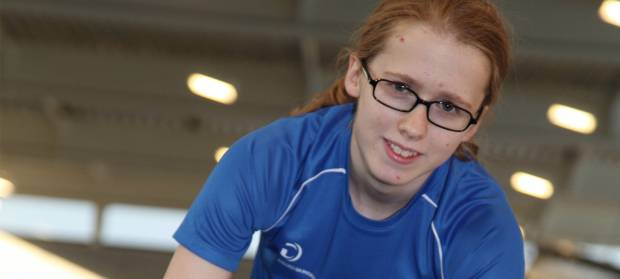Mencap launched a petition to the International Paralympics Committee in August this year to call on them to offer more sports and events to athletes with a learning disability at the Paralympics.
Athletes like Stephanie, who is prevented from competing in her strongest disciplines of 100 and 200m.
The petition gained lots of fantastic support with over 3,000 signatures in the first week! However, the petition also sparked some questions.
So, as our Paralympic and Olympic heroes are being celebrated at a homecoming parade in Manchester today, and we bask in the golden glow of TeamGB's success, I wanted to take a moment to address the three most common questions people asked and highlight why I strongly believe greater inclusion is a must.
How does the Paralympic classification system work?
There was confusion about whether athletes with a learning disability would be competing against athletes with physical disabilities. The short answer is no. The Paralympics tries to ensure a level playing field for athletes through a system of classification, otherwise it could become a case where the least impaired athletes always won. In an effort to make things equal, athletes are grouped depending on how their disability limits their activity. These are known as sports classes. Athletes with a learning disability compete against other athletes with a learning disability. It can still get a bit confusing as classifications vary between sports but there is a handy guide called LEXI which explains things in more detail.
How does a learning disability impact an athlete’s performance?
As a learning disability is a hidden disability, there were a few questions about how having a learning disability impacts someone’s ability to participate in a sport. Having a learning disability will impact different people in different ways depending on the severity of their disability. This means that individuals with a learning disability will struggle with different aspects of training and competing depending on their learning disability and the event they are taking part in. The key is that athletes are given the right support to help them understand the rules and achieve their potential. Stephanie, who set up the petition with us, wrote a blog that goes into more detail about some of the things she finds tough and why attempting to change her chosen discipline so that she could try and compete at the Paralympics, has been so difficult for her.
What about the Special Olympics?
It is true that athletes with a learning disability have the chance to compete in the Special Olympics. This is a grassroots sports programme specifically for athletes with a learning disability. Special Olympics use a system called divisioning where athletes are divided by their ability level to compete. However, it should not be seen as an alternative to the Paralympics. The two are separate events. The Paralympics is different because of the range of disabilities of participating athletes and the level of sporting abilities; it is a stage for the World’s elite disabled athletes.
It is fantastic that the Special Olympics exists to celebrate the achievements of athletes with a learning disability. However, for those at the top of their field, the Paralympics is their goal. This is where the real issue occurs, because whilst athletes with a learning disability are able to compete at the Paralympics, they are restricted to just 3 of the 23 sports on offer. This is compared to the 35 sports athletes compete in at the Special Olympics. This means that you can have athletes with a learning disability competing at an elite level who are prevented from taking part in the Paralympics as their sport is not open to them. To me, this seems incredibly unfair.
Why do I think inclusion matters?
As broadcaster of the Paralympics, Channel 4’s message was “Yes I Can.” On the face of it, this is an empowering message, focusing on the amazing abilities of people with a disability. However, the reality is that whilst there are many athletes with a learning disability who can and are competing at the Paralympic level, the current limitations on participation mean that they are being told “No you can’t.” This needs to change.
I want to see more people at the Paralympics, showing the world exactly what they can do. I think it is particularly important that athletes with hidden disabilities are seen, as well as those with physical disabilities, to reflect the diversity of our society. The IPC have the power to allow more people to say “Yes I can.”
Together, let’s keep the pressure on.
